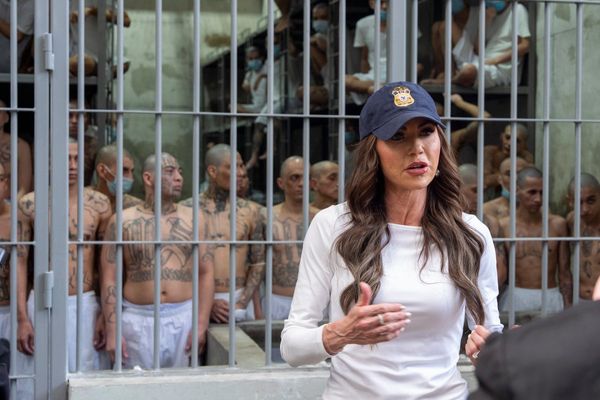LIGONIER, Pa. — Spring is for trout. Cold, tinted snowmelt flowing past shoreline skim ice. Circular ripples spreading outward from a perfect cast. A subsurface flash, a tug on the line and the thrill of guiding a crafty trout to the streambank or a waiting net.
For many Western Pennsylvanians, lazy summer days are for bass lying under the lily pads. Unless you're Jordan Stranko of Greensburg. Long after most anglers have left the streams, the Saint Vincent College student is still catching big trout in Westmoreland County.
How big? On late spring and early summer days when many anglers would have been happy to land an 18-inch largemouth, Stranko was wrestling with rainbow and golden rainbow trout that could be measured in feet instead of inches. His biggest in the last month was 27 inches, 7 pounds.
What's his secret?
"Well, it's not really a secret," he said, smiling and wading wet with no other anglers in sight on Loyalhanna Creek at Ligonier. "I know where the fish are and I go there when most people have stopped fishing for trout."
His process is actually a little more informed than that.
"This is a Delayed Harvest [Artificial Lures Only] area that gets stocked with big hatchery breeders. It's catch-and-release here until June 15 when you can keep three a day," he said. "Most guys have given up on trout by then, so most of those fish are still in there. I know they're there and just keep fishing for them when everybody else is gone and I'm the only one on the water."
In sections of 24 Pennsylvania waterways where Delayed Harvest Artificial Lures Only or Miscellaneous Special Regulation rules apply, Fish and Boat makes use of 2- to 3-year-old hatchery breeders that are beyond their reproductive years. In the Keystone Select Stocked Trout Waters program, some 10,000 hatchery retirees measuring from 14 to more than 20 inches are stocked in addition to 9- to 11-inch fish.
The fly and spin anglers permitted to fish year-round in Delayed Harvest/Keystone Select waters do it on a mandated catch-and-release basis except from June 15 to Labor Day, when the limit is three trout of mixed species 9 inches or larger. It's a conservation harvest predicated on a belief at Fish and Boat that most of those big trout are likely to succumb to summer waters that grow too warm or during typical winter fish kills.
Pennsylvania's southwest corner has three Keystone Select stretches on Meadow Run (Fayette County), Loyalhanna Creek (Westmoreland) and the upper Delayed Harvest area on Laurel Hill Creek (Somerset). Granted, some of the big fish may have been illegally poached or have migrated to more accommodating waters, but Stranko says thousands of the big bruisers remain long after many anglers have given up on trout.
"They're big fish and they need a lot of oxygen," he said, casting slightly upstream and across. "They find the deepest, coolest pool around or hang by a spring-fed tributary. I guarantee that all of the [Keystone Select] trout that are still here have been caught and released probably several times. They're smart, wary and well-adapted to the stream. They can be caught, but you have to give them something they haven't already seen."
When the weather starts to warm, Stranko strings a medium lightweight spinning rod with 6-pound fluorocarbon line. Because the fish have felt the hook in every fly pattern and spinner thrown to them since March, he gives them something he believes they have not seen.
"It's just a jig head and a [plastic] Trout Worm," he said. "Small head, like 1/32 ounce, and you don't want a tail that's too long. Just for the flash, I like to go with bright colors. White is a big color here. Sometimes if the flash is too much I go for a natural brown and a smaller Trout Magnet. If you need split shot, keep it small and simple."
Stranko lets his lure touch bottom and subtly lifts his rod tip to bounce it from rock to rock.
"Keep it on the bottom," he said. "That's where they are."
A golden rainbow pushing 20 inches circles the pool in front of him. Stranko says he prefers to sight fish in low clear summer water, but what can be seen is deceptive.
"You see that one big fish in this pool, but there are probably a dozen regular-colored browns and rainbows that you can't see all around it," he said. "I look for [the golden rainbows] and try to catch them, but I stay ready for a hit from the fish I can't see."
Stranko said he knows when he's hooked a standard-size trout in summer because the attack is generally hard and fast. The extra-large trout he targets, however, just open their mouths and let his lure bounce in.
"The smaller trout might think they have to work harder to get food before the big ones grab it," he said, "but I think it's just that the smaller fish can get by with less oxygen. These really big ones try to use as little energy as possible because it takes a lot more oxygen for them to move around."
Go to section







